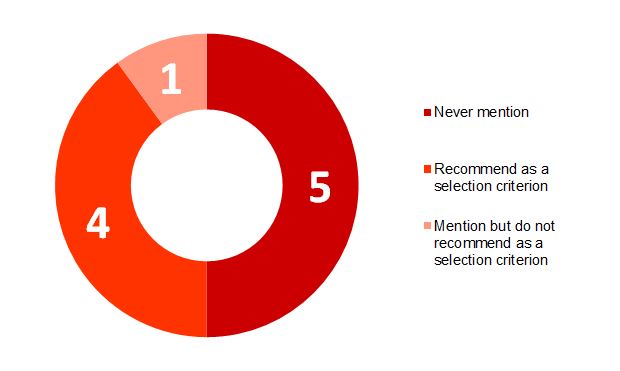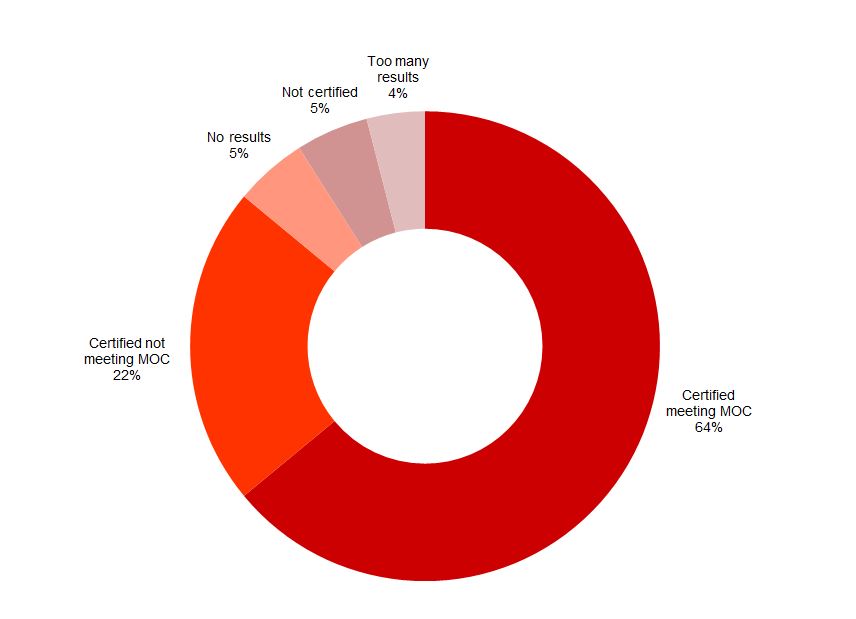Does the average patient know or care about medical board certification? An ABMS consumer survey finds that 91% of consumers claim that board certification is “somewhat important” to “very important” as a criterion for selecting a doctor. However, the same study finds that 78% of consumers incorrectly believe that a doctor must be board certified in his or her specialty area to practice medicine. And, although certification status can be typically checked online, a Pew Research “Health Topics” report finds less than half (44%) of internet users search online for information about doctors and other health professionals. So, what do the patients who comprise the 44% typically encounter when they research doctors online? We asked one of our colleagues — a 48-year-old woman living in the Boston area, (whom we will call Susan) — to share her experience researching and selecting a new primary care physician (PCP). Here is her story:
Susan started her search by Googling the phrase “How to choose a primary care doctor” and, in 0.38 seconds, she received a whopping 14.3 million search results. Of the top 10 results, most were health-insurance providers. Half of these addressed the subject of board certification:

Of the four articles that recommend board certification as a PCP selection criterion, two associate the concept of certification with physician competence or quality. For example, a post on the Wall Street Journal’s The Experts: Health blog,
“How to Pick a Primary-Care Doctor,” states:
A few ways for patients to evaluate a physician’s competency include: Look for information about the physician’s background and training online. For example, is he or she board certified?
Similarly,
“Choosing a Primary Care Physician,” an article published by Medical Mutual, recommends “checking on quality,” and states that:
Some physicians are “board certified.” This means they have completed training in a specialty and passed an exam that assesses their knowledge and skill in a particular area, such as diabetes.
The remaining two articles that mention certification as a selection criterion are notably neutral on what it actually means to be board certified, with one simply recommending that a PCP “has certification or is board eligible in the specialty” and the other suggesting patients should “research the doctor’s education, certification and performance history,” with no elaboration on how patients should interpret the results of such research.
Of the same set of four articles, only two actually name various certifying boards (ABMS, AMA, AOA, etc.) and provide links to board websites where patients can learn more about what certification means and, in the case of ABIM, actually verify a doctor’s certification status directly.
ABIM Verification
Susan started tracking and verifying physicians’ certification status as she delved into various patient-facing databases offered by her health plan and several Boston-area hospitals. “That’s when things started to get interesting,” Susan reported.
In a random sample of 60 internists pulled from three different patient-facing databases (one health plan, two Boston-area hospitals), Susan found that 56, or 93%, were listed as being certified in internal medicine. Upon entering these 56 physicians’ names into the ABIM verification tool (available on the ABIM homepage), the resulting breakout was “eye opening, to say the least.”

No Results versus Not Certified
While Susan felt that ABIM provides a clear explanation of what it means to be “meeting Maintenance of Certification requirements” (or not), she was less sure of how to interpret results showing doctors as “not certified” versus finding no results at all for a particular physician in the ABIM verification tool.
Insofar as “not certified” status typically lists initial certification dates, I assumed the physician had either allowed board certification to lapse or failed in a recertification attempt. Either way, I immediately eliminated all “not certified” candidates from my list and made a mental note not to take at face value the information provided in physician-search databases.
For the “no results” candidates:
It occurred to me that either the names might not match exactly between the two places I was looking OR the physicians in question may have earned certifications from boards other than ABIM.
However, being unable to easily find corresponding online verification tools, Susan eliminated “no results” physicians from her list “because I already had plenty of verifiable candidates on my list who were accepting patients and also met my other criteria — on the mature/experienced side, convenient location, and so forth.”
Health Plans versus Hospitals
Susan rarely found discrepancies between her health plan’s website and the ABIM verification tool, but the information on hospitals’ websites was often different from what appeared on the ABIM verification site. This left Susan wondering:
It was unclear to me whether hospitals or physicians take responsibility for maintaining the records, but given inconsistencies — phrasing, use of capitalization, punctuation, presence or lack of photos, etc. — I got the impression the hospital profiles might be self-managed by physicians or their administrative assistants.
Susan also observed a few anomalies in her search. For example, in one or two cases, health plan/hospital databases listed no certifications while ABIM actually verified certification.
These cases appear to involve mainly physicians who have only recently completed residency or initial certification, suggesting there is some lag time for propagating certification status into consumer-facing databases.
Indistiguishable Names on ABIM Verification
One more difficulty Susan noted with ABIM verification involved finding several physicians with the same name, such as “Jonathan Smith, MD”:
In many instances, I would see multiple — up to five or six — virtually indistinguishable results in the ABIM verification tool, because it offers no location or other supplemental information for each name.
Where no easy match was possible, Susan tended to simply dismiss those physicians from her list, especially when finding both certified and not certified candidates with exactly the same names.
I did feel a little bad, though, about eliminating potentially great doctors who had invested in certification for no other reason than not being able to make a credible match between two databases. I noticed that at least one hospital makes a specific practice of including each physician’s middle name in its database. That made it much easier to find reliable matches in the ABIM verification tool. In a few cases, there were also photos available in both the patient-facing database and the ABIM verification tool, so I was able to match the two records with greater confidence.
Takeaways for Certified Physicians
It may not be clear — due to a lack of patient-directed education on board certification and Maintenance of Certification — whether many patients really understand what it means to be board certified. Perhaps, as a result, patients are not allowing physicians’ certification status to take precedence in their decision making about medical care.
It is clear that physicians who invest in certification and MOC should promote their current certification status more assiduously. They must also actively ensure consistency between ABIM verification records and the many patient-facing online databases in which they are profiled — or at least the ones patients are most likely to see first in their online search results.
Finally, it’s a good idea to understand if there is a possibility that you might be confused with other noncertified or noncurrent physicians with the same name, and, if so, to take steps to ensure that you can be easily distinguished and verified by web-savvy patients.
Ultimately, Susan selected a female PCP, in practice for over 20 years, whom she was able to verify as both certified and meeting Maintenance of Certification requirements:
Once I had become educated on the subject — and with no specific personal or other recommendation to guide me — why would I make any other choice?
What other takeaways can you glean from Susan’s story?








